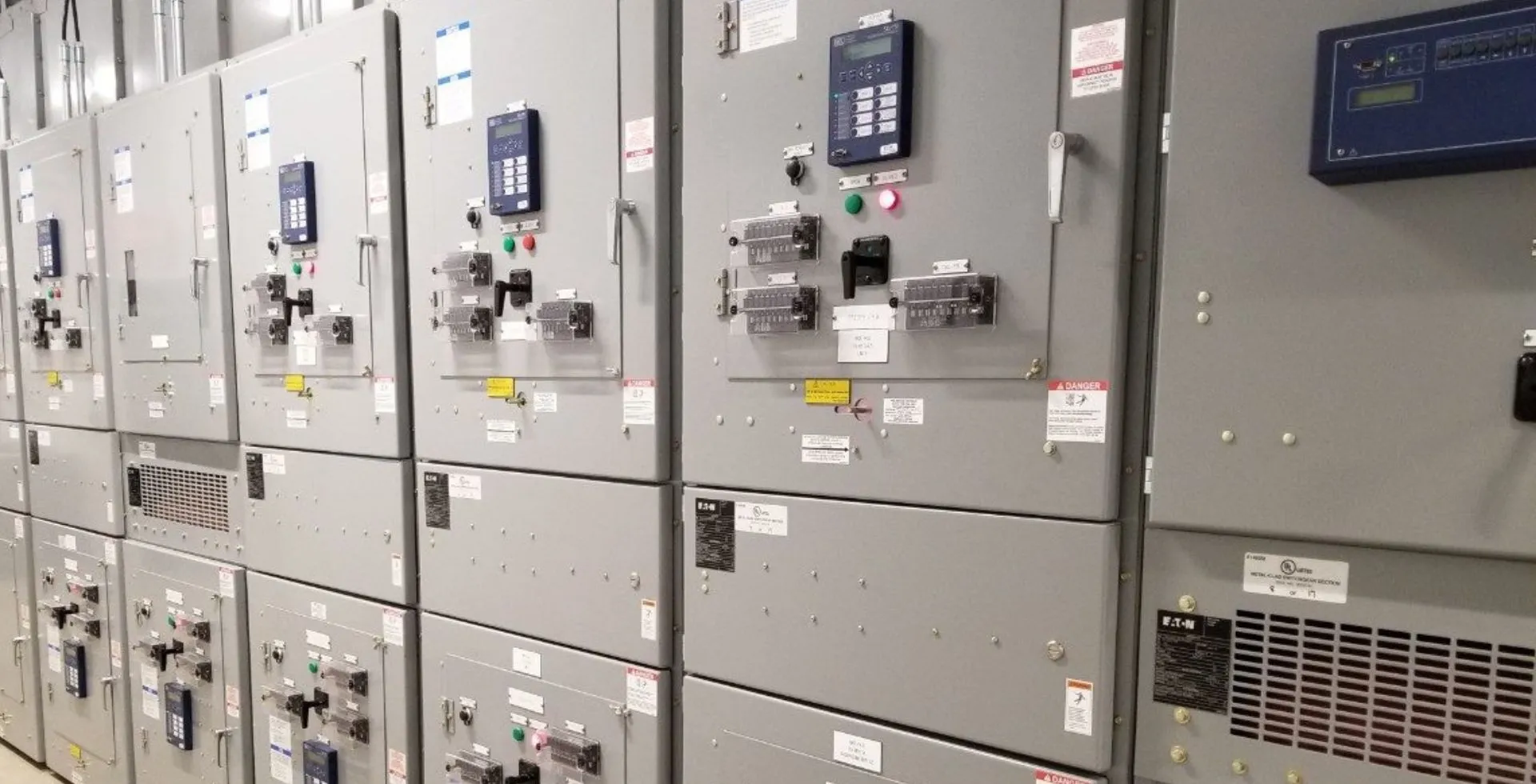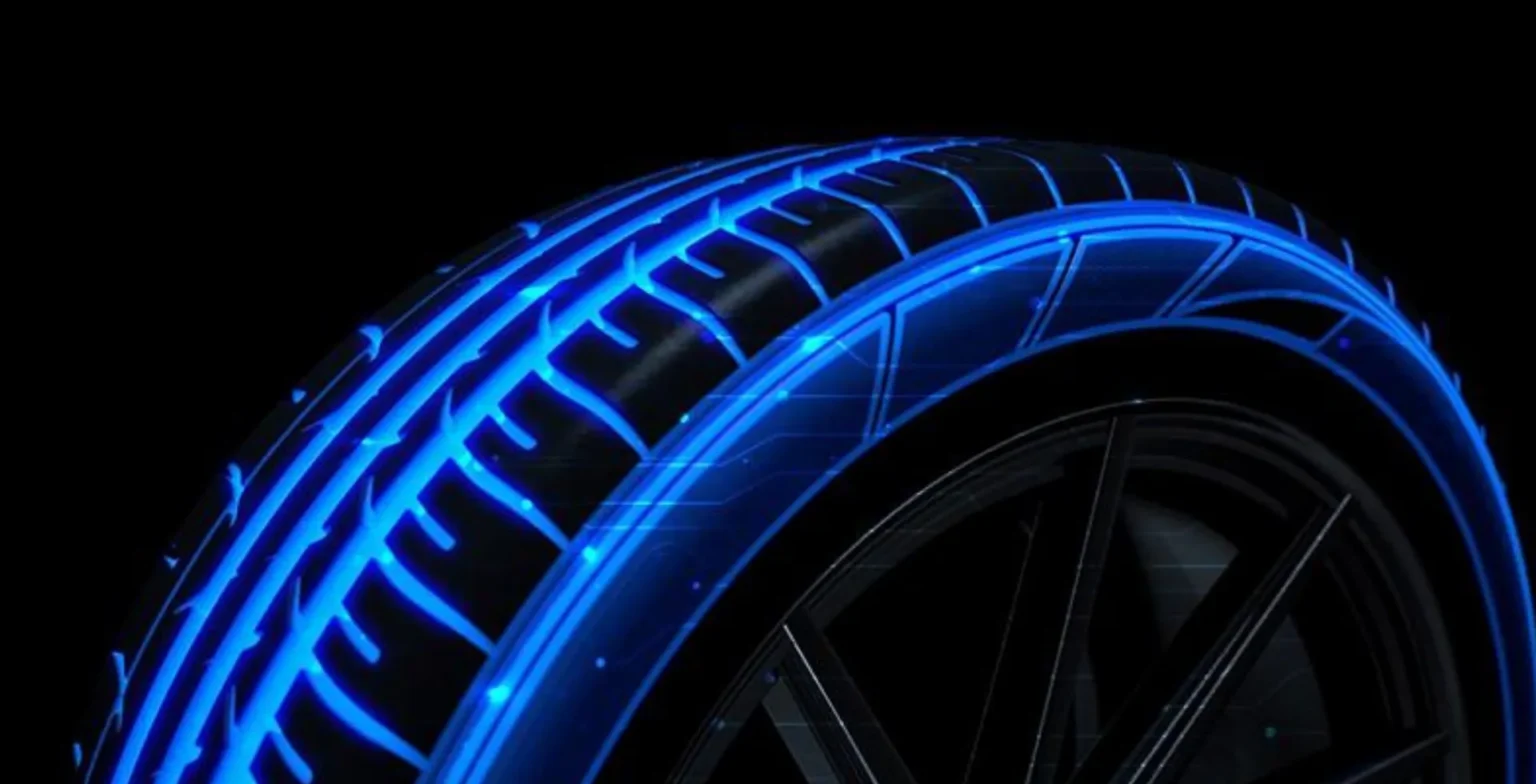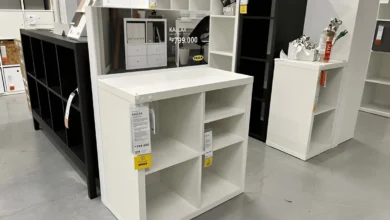
Switchgear defines a combination of electrical components that regulates, protects, and separates the plant’s power mechanisms from different system parts. It acts as an integrated control unit that manages the distribution of electrical energy to ensure safety and reliability.
It prevents damage to electrical appliances and people by isolating the faulted portion and providing safe maintenance access. Third, it maintains continuity of service under normal operating conditions and a standard network.
View Switchgear Components – Dadao details to get into the details.
How Do Switchgear Parts Work Together?
The main switchgear parts include a circuit breaker, disconnecting switch, fuse, and protection relay. Each part is specialized for a specific functionality and operates in unison to achieve proper system operations. Circuit breakers open and stop the electrical current in a fault condition, preventing damage to equipment and infrastructure.
Disconnect switches allow system maintenance by providing visual and physical isolation. Fuses melt under excessive current and prevent overcurrents from damaging the system. Circuits for protective relays are connected to an electrical system and to a power source so that, when certain parameters are detected, a specific action is performed.
With proper implementation, all these components can detect, isolate, and resolve electrical faults on time.
The Function of Electric Devices in the Operation of Switchgear
The supervision and control of the operations of the electric system and its components are crucial for the efficiency and functionality of the electrical systems, which rely on the electrical devices within the switchgear. Supervisory control and data acquisition systems allow for remote control and diagnosis of existing possible problems.
Control interfaces also enable operators to supervise processes. Electrical devices like auxiliary capacitors and reactors also control power quality and voltage levels. The safe distribution of electric energy along with the prompt addressing of system faults combination helps ensure the system’s integrity.
What Are the Different Types of Switchgear?
Low Voltage vs. High Voltage Switchgear
Low-voltage (LV) and high-voltage (HV) switchgear form a distinct part of any electrical system’s organizational structure and can manage diverse power levels.
LV switchgear covers the voltage range of up to 1 kV and is frequently deployed in residential, commercial, and small industrial sectors. It is composed of circuit breakers, fuses, and contactors which guarantee operational safety and system protection.
In contrast, HV switchgear is used in large-scale power generation, transmission, and distribution. It covers the voltage range of 36 kV and above. It is designed to manage greater electrical loads and incorporates strong insulation systems, arc extinguishers, and advanced monitoring devices to ensure reliability and safety under harsh conditions.
The choice of switchgear depends on the requirements of the particular application regarding voltage levels and operational requirements.
Medium Voltage Switchgear
Medium-voltage (MV) switchgear spans the voltage range of 1kV to 36kV and serves as a bridge between low-voltage and high-voltage systems. It finds application in operational facilities, infrastructure projects, and utility distribution networks.
MV switchgear mostly uses vacuum, air, or gas-insulated circuit breakers, ensuring reliable fault currents interruption. It also uses advanced protection relays and monitoring devices to improve operational reliability and efficiency.
One of the advantages of MV switchgear is versatility. It can perform different functions such as motor control and substation automation. Moreover, adopting new technologies has made it possible to create compact and modular MV switchgear systems, enhancing space efficiency and ease of maintenance.
Differentiating Between Arc Resistant Switchgear and Standard Switchgear
Arc-resistant switchgear has a different strategy for protecting personnel and equipment than standard switchgear. Standard switchgear facilitates normal operations and protects the user from electrical accidents, but it does not give adequate protection during an arc flash incident.
Arc flashes can be defined as highly energetic electrical discharges that cause severe system destruction, thermal burns, and pressure waves.
This type of switchgear mitigates this limitation by containing the arc energy and redirecting it away from the other operators. Arc-resistant switchgear is outfitted with stronger enclosures, pressure relief devices, and sealed compartments to protect users from direct exposure to the energy released during an arc flash.
This design protects the users and improves overall safety in the workplace. Although arc-resistant switchgear is more expensive than conventional switchgear, it becomes a necessity in places where there is a high risk of an arc flash.
What Are the Main Components of Switchgear?
Circuit Breakers and Their Importance
These circuit breakers are important in switchgear because they break electrical supply in case of excessive current or short circuit. Its main objective is to protect electrical components from damage due to faulty devices by removing dangerous circuits to guarantee safety and reliability while in operation.
The system has sensors and mechanisms that monitor the abnormal current flow, and amputation is performed within milliseconds. They are very popular in industrial and domestic homes because they can easily be reset after being put into a trip state.
The Role of Fuses in Power Distribution
Fuses are equally as important as other components in the power distribution system as fuses are used to protect against overcurrent by opening a circuit when current exceeds a certain limit. Unlike circuit breakers, fuses melt a metal wire or filament, which physically separates the electrical connection.
The single-use design guarantees an application’s effectiveness and simplicity, making fuses very inexpensive. This makes them economically advantageous in many applications.
They are commonly utilized in places where rapid response to overcurrent is needed. In all cases, replacing the fuse may result in longer system downtime compared to other resettable devices.
Ways Switches and Relays Help with Electrical Safety
Both switches and relays help manage electrical safety by controlling the flow of electricity and isolating faults. A switch can be manually or automatically operated to connect or disconnect parts of an electrical circuit, which greatly helps power management.
Relays are electromechanical or solid-state devices that automatically sense an abnormal condition and initiate protective actions like opening a circuit or shifting the load. These control elements enable better system management while minimizing dangers from electrical malfunction, making them essential in modern electrical systems.
What Are the Insulating Mediums Used in Switchgear?
Air Insulated vs. Sulfur Hexafluoride Insulated Switchgear
Different insulating mediums for switches guarantee their safe and efficient operation under varying electrical conditions. With air-insulated switchgear (AIS), using atmospheric air as the primary insulating material sets it apart from other types of switchgear.
This type has a relatively low cost and presumably low impact on the surroundings, making it appropriate for the low voltage switchgear where space is not a problem. On the other hand, there is sulfur hexafluoride (SF₆) insulated switchgear (GIS) that utilizes SF₆ gas, which is capable of acting as a highly effective dielectric medium.
Value is placed on SF₆ switchgear for compact structure, strong base, and great value as an insulator as it is used in high-power switchgear. SF₆ also has a unique capability among other gases to be used in electrical switchgear. Even so, considerations have to be made for the astonishingly high global warming potential of SF₆ gas.
The Importance of Insulating Materials in High Voltage Switchgear
Insulating materials guarantee the operative value of high-voltage switchgear by averting electrical discharges from the switch and maintaining the system’s integrity under distortion.
They Sandwith the component that should not conduct electricity, which cannot ensure protection against short circuits and, therefore, ensure a safe energy distribution.
Putting aside safety features, advanced technology also offers solutions for environmental challenges. The selection of insulating medium materials will impact overall result efficiency, operational safety, and sometimes environmental pollution. There are also some reliability and efficiency restrictions when implementing new technologies.
How Different Insulating Materials Impact Current Flow in Electrical Systems
The insulating medium used in switchgear determines the flow of current because it influences how the system manages electrical stress and breakdowns. Higher-quality insulating materials enhance voltage levels while also improving the equipment’s capability to quench arcs, leading to reduced energy losses and improved operation reliability.
It also influences thermal performance due to varying rates at which different materials dissipate heat. For example, SF₆ gas has thermal conductivity and excellent dielectric strength, enabling effective containment of high voltage currents.
However, air-insulated systems may need greater distances between components for comparable insulation and performance. Therefore, choosing an insulating medium is an essential consideration for the design and efficiency of electrical systems.
How Is Switchgear Installed and Maintained?
Steps to Properly Install High Voltage Switchgear
- Site Prep: Clear the work site of objects and ensure it is appropriately leveled. Check whether the environmental factors, including temperature and humidity, align with the manufacturer’s specifications.
- Unpacking and Inspection: Take the switchgear out of the box and evaluate if all parts have been shipped in one piece. Report any missing items to the supplier to be issued in due course.
- Foundation and Anchoring: Place the switchgear on the foundation first assigned to it and then anchor it in position as per the stability and alignment requirements within manufacturer instructions.
- Electrical Connections: Make all the necessary connections, including power and control cables and ground wires. Check the connections for di-electric continuity, overheating, and tightening and constraining proper position checks.
- Testing and Commissioning: Perform all checks and testing of each part of the system separation at the prescribed values and save the results to refer to them in subsequent tasks.
- Final Inspection and Documentation: After installing the system equipment, check if the as-built meets the design documents and electrical requirements. Keep the file containing all the materials related to all commissioning items.
Maintenance Best Practices for Electrical Switchgear
- Routine Inspections: Check for any loose connectors that may be overheating or corroding. Take corrective actions immediately to avoid additional damage.
- Cleaning: To maintain optimal functioning, routinely clean switchgear parts such as busbars and circuit breakers to prevent dust and impurities from collecting.
- Lubrication: To avoid damage, the moving parts, including switches and circuit breakers, should be lubricated to facilitate effortless motion.
- Testing and Calibration: Examine the system’s integrity by conducting protective relay tests and breaker timing analysis for accuracy and reliability checks.
- Thermal Scanning: Use infrared thermography to identify atypical heat sources that may suggest overloaded connections or other faults.
Common Issues and Troubleshooting High Voltage Switchgear
Failures in Circuit Breakers:
- Symptom: Interruptions in electrical service due to nonfunctional breaker activity or random tripping.
- Cause: Mechanical parts have bearing failure, contact alignment issues, and insufficient lubrication.
- Solution: Repair reasonable portions’ structure, adjust the alignment of bearing parts, and provide lubrication if needed.
Degrade in Insulation:
- Symptom: Escape in breakdown voltage or auto die electric discharge occurrence often.
- Cause: Deteriorating material, water leakage, and temperature assumedly too high.
- Solution: Remove the insulator that showed signs of degradation and establish proper insulation protection.
OverHeat:
- Symptom: Too much heating of components during functioning.
- Cause: Bad connections, unequal distribution of loads, and fresh air supply too moderate.
- Solution: Improve connection tightness, equalize distribution, and increase air circulation if needed.
Arcing or Flashover:
- Symptom: A sign of arcing or snap in the circuit within the switchgear box audible or visible.
- Cause: Dirt, damaged insulator, or overly proximity.
- Solution: Remove from the space contaminations, fix affected insulator regions, and check the minimum required distances.
Failure in Control Circuit:
- Symptom: Erratic operation of the relay or failure in the transfer of information.
- Cause: Wiring faults, program errors, or adjustments in relays.
- Solution: Check the wiring, refresh the program, and adjust the relay’s positions based on requirements.
When using these measures, it is possible to improve reliability and ensure long-life functioning of the high-voltage switchgear systems.
How Does Switchgear Contribute to Power System Stability?
The Role of Switchgear in Interrupting Fault Currents
In an electrical system, switchgear is crucial in ensuring that potential faults or risks such as short circuits are dealt with swiftly and effectively. Specific faults and short circuits could lead to dangerous outcomes in an ill-controlled electricity system.
Modernized circuit breakers are now equipped with circuit isolation capability, which ensures that the doomed area of the current network is cut off. This isolation prevents considerable damage to a core asset, reduces the time assets are inactive, and avoids loss of functionality in the power system.
Switchgear allows equipment located downstream assets prone to damage due to faults to enable operational flow.
Switchgear in Power Supply and Distribution Networks
Switchgear is used extensively in both medium and high-voltage power transmission systems and in power distribution networks. It serves as an energy central control hub and ensures reliable electricity disbursement by managing the power flow between generators and usage centers.
Switchgear can also set voltage, ensure synchronisation, and isolate portions of the network for engineering servicing or fault clearance. Furthermore, its capabilities in controlling, monitoring, and protecting power systems impact the system’s proper energy efficiency and reliability.
Effects of Advanced Intelligent Switchgear on Current Electrical Systems
With the emergence of modern electrical systems, intelligent switchgear has come into existence thanks to the development of sophisticated communication and monitoring systems. These new systems come added capabilities such as condition monitoring, predictive maintenance, and remote system control.
Intelligent switchgear with embedded sensors and IoT technologies provides performance analytics, making operational and strategic decision-making more efficient. Additionally, this technology facilitates energy management, minimizes maintenance expenses, and improves the integration of renewables into the grid.
Integrating advanced intelligent switchgear improves system reliability, safety, and operational flexibility while dealing with complex power distribution challenges for utilities and industries.













